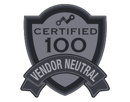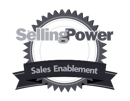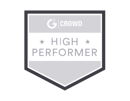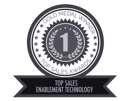sales process
You Can Fly a Plane in Five Easy Steps (And Other Ridiculous Lies We Tell Ourselves)
I was on a call recently with a very smart sales leader with a strong vision for how he wants his company to sell. His approach is proactive, ambitious, and thought-out. He knows which data points to track, how to create reports, how to guide his sales team, how to position the company, which methodologies he wants to use, and what the optimal sales process looks like.
Sales Process or Sales Methodology? What’s the Difference, and Does it Actually Matter?
The complex sales world is littered with jargon that is so often repeated that they lose their meaning. But when these same terms are treated not as jargon, but rather become clearly understood, they can become key differentiators for your sales team.
Growth Comes From a Complex Web of Small Changes, Not a Giant Heroic Leap
I was interested recently to read this post by Matt Green on LinkedIn. In it, he points out that when organizations hand down large growth targets like, say, 20%, the tendency is for sales teams to panic. And then to invest in one big change, like hiring a lot of SDRs to bring in a lot more leads or investing in a big new technology platform or sending out massive automated email campaigns. This almost always backfires.
The Sales Process And Contextual Flexibility
I’ve been doing some work with a brilliant CRO. We’ve been reworking and implementing a revised selling/buying process. Their previous process was poorly defined, outdated, and people weren’t using it.
What’s more important: our Sales Process, or our Customer’s Buying Journey?
Traditional wisdom suggests that following a well-defined sales process can significantly improve both individual and organisational sales performance. The evidence certainly suggests that this approach can be effective in relatively simple, high-volume, predictable and repeatable sales environments.
Why Do Sales Professionals “See Red” When You Say “Sales Process”?
One of the challenges sales leaders face when trying to help a team improve their sales performance, is resistance to the phrase “sales process.” In fact, sometimes when you wave the words “sales process” in front of a sales professional, they become like a bull with a red cape waved in front of its face.
External Exposure
Podcasts
- Tony Morris interviews George Brontén on the podcast "Confessions of a serial seller"
- Deadly Assumptions that are Killing your B2B Sales - Outside Sales Talk with George Brontén
- SaaS-Story in the Making: Designing a Buyer-focused Sales Process - with George Brontén
- Tibor Shanto, Sales Scrum, interviews George Brontén
- Andy Paul, Sales Enablement: Stop Killing Deals, with George Brontén
- Jonathan Farrington interviews George Brontén about Stop Killing Deals [the book]
- Sales Futurists: The Future of Professional Selling - What Will the New "Normal" Be Like?
- Sales Pipeline Radio: You’re Killing Sales Deals Without Knowing It: George Will Help You Fix It
- Penta Marketing Interviews George Bronten in the Podcast Emerging Stronger™
- Integrity Solutions: Unmasking and defeating deadly assumptions that plague sales organizations
Videos & interviews
- The Top 5 Ways You are Killing Your Sales - Brutal Truth Sales Podcast
- Phil Gerbyshak interviews George Brontén about the Stop Killing Deals book release
- Membrain's Founding Story
- Sales Tools - the Good, the Bad, and the Ugly
- Here's what to consider when adding or switching your CRM
- Productivity, efficiency, effectiveness – what’s what and where to focus?
- How to Build a Sales Process That Drives Successful Behaviors
- Can Checklists Stop Deals from Dying and Help Consistently Achieve Quota?
Guest Posts
- G2Crowd: "How to Get the Most out of Your Sales Technology Investment"
- Saleslounge: Varför dina stjärnsäljare blir dåliga säljchefer
- Saleslounge: Vad är komplex försäljning?
- Vainu: Så blir du en mästare på komplex B2B-försäljning
- CSO Insights: Sales Process Interview, Part 2
- CSO Insights: Sales Process Interview, Part 1
- Richardson: 3 Pitfalls that Still Make Sales Teams Waste Time and Lower Sales Effectiveness
- Smart Selling Tools: How to Stop Fighting the Monster of Sales Technology Complexity









